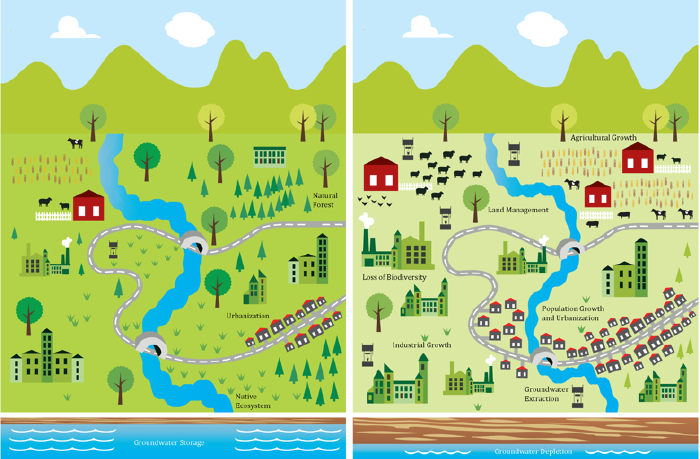California drought highlights importance of understanding both natural and human causes of drought
ESRL Physical Sciences Laboratory researcher Martin Hoerling, and co-authors from the University of California-Irvine are calling for decision makers to pay more attention to the many human causes of drought – including overuse of water resources, growing water demand from burgeoning energy and food production, and anthropogenic climate change. Their essay, solicited by Nature editors following the AGU Chapman Conference on the California drought, was published in the August 27th issue.
The extreme drought in California has highlighted the need to better understand and respond to both the natural and socio-economic factors that affect the supply and demand of water. The Chapman conference brought together experts from many disciplines to examine the broad spectrum of issues related to the drought. Natural causes such as high temperatures, low rainfall, and reduced snowpack, have been evident. At the same time, human activities are stressing water supplies – this includes increased demand and decreased supply, outdated water management, rising energy and food production, intensive irrigation, climate change from greenhouse gas emissions, out-dated infrastructure, urbanization, poor environmental policy, and land use change. While debate continues on how greenhouse gas emissions affect California drought risk, the rise in water demand is clear.
Droughts impact livelihoods, especially in agricultural communities and the broader economy. Yet the California drought also reveals there is a real and present danger in prioritizing human needs over environmental, which can lead to irreparable damage to natural resources and ecosystems and have negative societal consequences. Careful planning and policies can help ensure effective allocation of water resources and better post-drought recovery of environmental assets.
But it's not just California...water supplies worldwide are increasingly stressed by human activities – elevating the risk of human-caused (anthropogenic) drought. One positive note on the California drought is that it can provide lessons to communities about managing water in a warmer future climate with increased demands, and show how scientists and stakeholders can give valuable input in addressing local water supply and demand issues.
The authors recommend collaboration between scientists and decision-makers in better integrating climate information with the other complex issues related to water supply and demand. A more complete evaluation of causes and vulnerabilities will lead to improvements in drought management, adaptation, mitigation, resilience assessment, and prediction.
Posted: August 27, 2015

AghaKouchak, A., D. Feldman, M. Hoerling, T. Huxman, and J. Lund (August 2015): Water and climate: Recognize anthropogenic drought. Nature, 524, 409-411. https://doi.org/10.1038/524409a